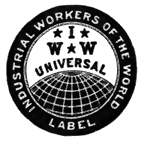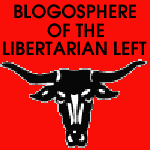Ford's in His Heaven, All's Right With the World
From Jesse Walker, via email. An article by George Baca in Social Analysis: "Legends of Fordism"
Baca's article is a critique of David Harvey's idealization of "Fordism" in the postwar U.S. and the mixed economies of Europe and Japan, in contrast to the neoliberalism of the past three decades. (Fordism is pretty much the same as the New Left idea of corporate liberalism, except the New Left didn't think the sun shone out of FDR's ass.)
For one thing, Baca says, Harvey attributes to neoliberal reaction many things that actually coexisted with the idyllic reign of Fordism. Sweatshop labor in southern American chicken plants, for example. The south never came under Fordism in the first place--the New Deal explicitly carved out the Solid South, a key base of FDR's support, from the corporate liberal system. Blacks, farm laborers, textile workers, and the like, remained in a world apart.
More important, Harvey has an exaggerated notion of the "progressive" nature of Fordism/corporate liberalism, and neglects its origins in the perceived self-interest of one segment of organized capital.
As G. William Domhoff and Thomas Ferguson have argued, corporate liberalism was the version of capitalism supported by a particular bloc of capitalists: large corporations engaged in capital-intensive, export-oriented production. Because their "technostructure" (as Galbraith called it) involved long lead-times and long-term planning, they valued stability and order on the shop floor above all things. And because they were capital-intensive, labor costs were a comparatively small part of overall cost. So a social contract in which workers were given higher wages and benefits, in return for the enforcement of contractual discipline by a domesticated union bureaucracy, was made to order. And since such industry was the most prone to overproduction, under the cartelizing effects of state capitalism, programs like Social Security that put a floor under demand were likewise in their interest. And the Taylorist bargain, by which workers agreed to "let managers manage" in return for higher wages, secured management in the position of control it needed to carry out the neoliberal revolution of the 1970s. Without the previous groundwork of deskilling and the Meanyization of the AFL-CIO, labor might have been less willing to acquiesce and more able to fight the post-1970s rollback strategy.
Baca also, citing Piven and Cloward (Regulating the Poor), casts doubt on
And although he doesn't get much into it, it's also important to remember that the welfare state deliberately supplanted or crowded out some libertarian alternatives on the Left. For example, there are reams of material on self-organized "welfare" among the working class in the writing of Kropotkin, E.P. Thompson, Colin Ward, and David Beito (for a great review of the literature, see here). And the Wagner Act's main effect was to domesticate the industrial unions of the early '30s, and shift their focus from issues of production on the shop floor to issues of pay and benefits.
Baca sums up his argument:
Baca's article is a critique of David Harvey's idealization of "Fordism" in the postwar U.S. and the mixed economies of Europe and Japan, in contrast to the neoliberalism of the past three decades. (Fordism is pretty much the same as the New Left idea of corporate liberalism, except the New Left didn't think the sun shone out of FDR's ass.)
For one thing, Baca says, Harvey attributes to neoliberal reaction many things that actually coexisted with the idyllic reign of Fordism. Sweatshop labor in southern American chicken plants, for example. The south never came under Fordism in the first place--the New Deal explicitly carved out the Solid South, a key base of FDR's support, from the corporate liberal system. Blacks, farm laborers, textile workers, and the like, remained in a world apart.
More important, Harvey has an exaggerated notion of the "progressive" nature of Fordism/corporate liberalism, and neglects its origins in the perceived self-interest of one segment of organized capital.
As G. William Domhoff and Thomas Ferguson have argued, corporate liberalism was the version of capitalism supported by a particular bloc of capitalists: large corporations engaged in capital-intensive, export-oriented production. Because their "technostructure" (as Galbraith called it) involved long lead-times and long-term planning, they valued stability and order on the shop floor above all things. And because they were capital-intensive, labor costs were a comparatively small part of overall cost. So a social contract in which workers were given higher wages and benefits, in return for the enforcement of contractual discipline by a domesticated union bureaucracy, was made to order. And since such industry was the most prone to overproduction, under the cartelizing effects of state capitalism, programs like Social Security that put a floor under demand were likewise in their interest. And the Taylorist bargain, by which workers agreed to "let managers manage" in return for higher wages, secured management in the position of control it needed to carry out the neoliberal revolution of the 1970s. Without the previous groundwork of deskilling and the Meanyization of the AFL-CIO, labor might have been less willing to acquiesce and more able to fight the post-1970s rollback strategy.
The limitations of his framework have prevented him from discerning that Fordism existed as an ideological claim, which industrial elites used to rebuild national economies and imperial holdings from the wreckage of World War II. Historical scholarship on the politics of the 1930s and 1940s illustrates how many of the contemporary aspects of the welfare state, and its vaunted ‘compromise,’ were rooted in the brute strength of militarization..., anticommunism..., and racist policies.... From the standpoint of historically informed analyses, we can better understand that the postwar welfare state was a complex ensemble of disciplinary strategies that directly led to the very upheaval that Harvey limits to the early 1970s.
Baca also, citing Piven and Cloward (Regulating the Poor), casts doubt on
the federal state’s self-presentation that welfare was a well-intentioned program designed to eliminate poverty, and hence unwittingly present a rosy picture of welfare and deemphasize how welfare policies were intended to regulate the poor more so than they were to regulate capital.
...[T]he state projects that created compulsory education, public health policies, social security, and poor relief, were first and foremost strategies for regulating the working class....
And although he doesn't get much into it, it's also important to remember that the welfare state deliberately supplanted or crowded out some libertarian alternatives on the Left. For example, there are reams of material on self-organized "welfare" among the working class in the writing of Kropotkin, E.P. Thompson, Colin Ward, and David Beito (for a great review of the literature, see here). And the Wagner Act's main effect was to domesticate the industrial unions of the early '30s, and shift their focus from issues of production on the shop floor to issues of pay and benefits.
Baca sums up his argument:
To conclude, I argue that the political and ideological assault on the unions began with the Wagner and Taft-Hartley Acts, and that the assault on Civil Rights was contained within the implementation of policies by federal laws in a way that demobilized black progressive politics..... Moreover, Keynesian policies sought simultaneously to regulate the poor, working people, and capital....









0 Comments:
Post a Comment
<< Home